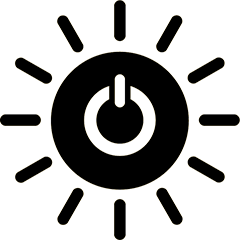Stable solar-to-energy conversion from Technion-Israel Institute of Technology uses full cycle redox transformation to break water into hydrogen fuel.
Benefits
- Sustainable
- Scalable
- Economical
Applications
- Commercial and industrial energy generation
UN Sustainable Development Goals Addressed
-

Goal 7: Affordable & Clean Energy
The Challenge
Most energy is generated through the burning of fossil fuels which release carbon dioxide and other greenhouse gases. These gases absorb solar energy and keep heat close to the Earth, also know as the greenhouse effect, which has led to global warming. Solar panels are a renewable energy alternative that do not burn fossil fuels. Traditional solar panels only start the flow of electricity, rather than create a fuel source for further energy generation.
Innovation Details
The photocatalyst can break down water into hydrogen fuel. It contains nanoparticles that generate positive and negative charges when in water and light. These charges simultaneously break the water molecule to produce hydrogen and oxygen, similar to the process that occurs during . The hydrogen stores energy within its bond that can be used later as a fuel to generate clean energy. The system shows a 4.2% solar to chemical energy conversion efficiency, higher than all preceding technologies.
Biological Model
Photosynthesis is essential for life on Earth. It is the process by which plants produce energy and oxygen using just sunlight, water, and carbon dioxide.





